Beams of light pierce the heavens and the streets of Hobart are teeming with people, caught up in the spirit of revelry.
It’s June 2013, and Dark Mofo’s creative director, Leigh Carmichael, has just stepped out of the Theatre Royal after watching Vandemonian Lags, a stage show delving into Tasmania’s dark convict past.
He is struck by what he sees and hears on Campbell St as the first of his bold winter festivals draws to a close.
“The street was vibing and there was a lot of energy,” he says. “[Ryoji Ikeda’s light installation] Spectra was up, people were coming back and talking about it.”
“And I had a little moment where I got teary.
“I still remember it. And I thought, ‘I think we’re onto something. I think we’ve pulled this off’.”
A decade later, Dark Mofo, now Hobart’s premier music and arts festival, has exceeded all of Carmichael’s – and Tasmania’s – wildest expectations.
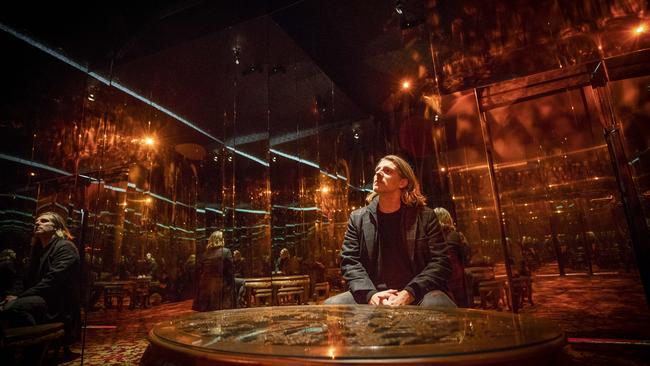
Today, it regularly sells 100,000 tickets, with between 60 and 70 per cent of patrons flocking from interstate. More than 25,000 people attend the festival over a two-week period.
Carmichael, who was formerly part of the creative team at Moorilla and MONA and was one of the spearheads behind the first five Mona Foma festivals, is overseeing his 10th and final Dark Mofo this year.
He will then shift his focus to his role as the director of DarkLab, an offshoot of MONA.
The 47-year-old says his emotions are “clouded” as he nears the end of his time at the helm of Dark Mofo.
“I’m sad in some ways that this is the end of that era and time of my life where I have been able to focus on this project. But I’m also relieved,” he says.
“I’m proud of what we’ve been able to achieve in the middle of winter in Hobart.
“I feel like I’ve climbed this mountain a lot of times now. And I do feel the festival is going to benefit from new energy and new ideas. I really believe that. It’s the key reason to step aside.”
In Dark Mofo’s early years, Carmichael says he and his team felt there was “nothing to lose”, despite concern from parts of the community that the festival could turn out to be nothing more than a particularly costly example of hubris.
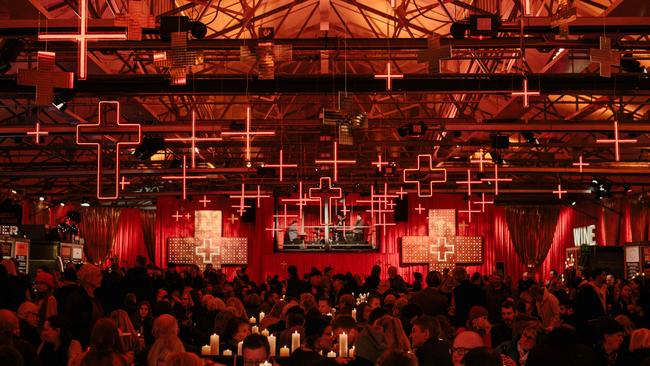
But the ancient power of the winter solstice prevailed, Carmichael says.
“There’s something really special about that time when we are turning from the longest nights back towards the light,” he says.
“Spring and summer and something to look forward to. But the way it brings people together to huddle around fires and talk and eat and celebrate, I didn’t fully appreciate the strength and opportunity in that.”
“In some ways, it seems obvious now. But it wasn’t really at the time.”
The aesthetic of Dark Mofo has remained consistent over the years. Lots of red, plenty of black. The David Lynch inspiration is a constant and the pagan themes undeniable. Sex, death, food. All that jazz (sometimes literally).
Winter tourism has boomed in Tasmania since Dark Mofo’s inception and the chilly conditions are no longer seen as an obstacle to the visitor economy. Tourism Tasmania CEO Sarah Clark said the agency’s Off Season marketing campaign highlighted the state’s myriad winter events, including Dark Mofo, making a virtue of the cold.
“Dark Mofo has grown to be an iconic event attracting thousands of visitors to the state during the traditionally quieter months,” Ms Clark said.
“Over the years, there is no doubt that Dark Mofo and Tasmania’s growing calendar of unique events have helped put Tasmania on travellers’ bucket lists.”
Three or four years into the festival’s history, Dark Mofo “really started to hit its mark”, Carmichael says, as ticket sales went “through the roof” and numerous shows sold out.
It was then that the pressure began to mount for Carmichael to up the ante. As the reviews became increasingly glowing, so did expectations grow.

“You feel that in order to remain relevant, it’s a really important thing … to push boundaries and to take risks and take on challenges,” he says.
“Some of those difficult projects are the ones that have the most interest around them and generate quite a lot of attention. So you do feel the expectations to push ahead in that vein.
“It’s kind of what made the festival successful, in my view.”
The price of that success has been a series of intense controversies, with one episode in particular looming large in Carmichael’s mind.
Union Flag, a work by Spanish artist Santiago Sierra that involved soaking a British flag in blood donated by First Nations people, sparked a firestorm of outrage across the country in 2021. While some local Aboriginal groups backed the project, others described it as culturally insensitive.
The work was eventually scrapped and Carmichael apologised at the time for “any hurt that has been caused”.
Of the many controversial projects he’s been a part of over the years, Carmichael says he would “do it all again, including Union Flag”.
“I think that was an important project in the life of the festival, for all the difficulties getting through that one,” he says.
“But I do believe in art and the power of art and the ability of art to make a difference culturally and to broaden our minds and to broaden the way we look at things.”
But it wasn’t just Carmichael who faced the wrath of the public for Union Flag. Mona founder, David Walsh, who has pumped millions of dollars into Dark Mofo over the past decade was also heavily criticised.
“He underwrites all of the risk, he takes a huge personal load and then a personal toll in the middle of controversy,” Carmichael says. “When Union Flag unfolded, he was personally attacked and so was I. So he’s carried a heavy burden.”
“At the 10-year mark, I think that should be acknowledged. His generosity has no bounds. He really does what he can do.”
Reflecting on the beginnings of the festival, Walsh says his father warned him he would “back the Tasmanian winter against any tourism venture”.
“When Leigh Carmichael pitched Dark Mofo to me, we knew that spectacle and bluster might not be enough to justify taking dad’s wager,” the enigmatic museum owner says.
“Even with the best that we could do, it was no certainty that Dark could enliven and enlighten our winter. But risks were taken, and Dark has delivered. More risks, and more opportunities will be forthcoming.

“The potency of the returning solstice remains.”
However, not everyone is entirely on-board with Dark Mofo’s Dionysian merrymaking, Carmichael says.
He has accused the University of Tasmania of attempting to censor works hosted on its properties and says the Hobart City Council has signalled that it’s going to start cracking down on sound pollution.
Various churches won’t allow Dark Mofo to hold events at their sites, either.
“It’s getting quite hard when people don’t want to be dragged into our controversial issues,” Carmichael says. “So there’s some challenges there in terms of the festival continuing on in the vein that it has. Even though I think that’s what’s made the festival successful, it is also the thing that’s kind of tearing it apart.”
“It’s their property, it’s their right to decide what goes in. But it makes it very difficult for us to present the types of works that we’re interested in.
“It is everybody’s right, the community’s right, and society’s right to push back. And I just hope that a reasonable balance can be found that doesn’t completely destroy the foundation of the festival and the way we’ve been able to operate.”
As available event space dries up, Dark Mofo is faced with “pretty real” problems moving forward, Carmichael says.
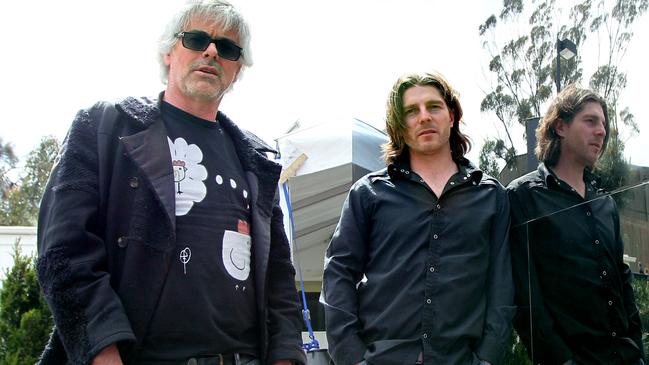
The festival is no longer able to use the Avalon Theatre, the old Forestry Tasmania building, the former K&D site, nor much of Macquarie Point.
“There’s barely enough [event infrastructure],” Carmichael says. “This year we were forced to build a shed to house artwork at Mac Point. It came at a huge cost.”
“When the festival budget needs to stretch to actually building infrastructure to house works, then it’s just not a very sustainable, viable model.”
Carmichael feels that all three tiers of government need to partner with private entities to invest in cultural infrastructure in Hobart. “Because without it, life’s pretty dull,” he says.
Part of the solution to the problem, according to Carmichael, is DarkLab’s vision for the In the Hanging Garden precinct, which is bordered by Liverpool, Bathurst, Murray and Watchorn streets.
DarkLab has grand plans to turn the block into a vibrant cultural hub boasting restaurants, bars, live music and family-friendly venues and residential and commercial spaces. The Odeon Theatre will also be restored under the masterplan for the precinct.
Carmichael’s main priority following the 10th Dark Mofo will be bringing this masterplan to fruition.
“We’re in the driver’s seat … of where that’s headed. That will be my focus. I’m pretty excited about that,” he says.
Tired and “at times, exhausted”, Carmichael says he is ready to embrace the next chapter in his life.
But first, he has one more festival to see through to the end.
“I’m sure it’ll be an interesting few weeks,” he says with a grin.
Leigh Carmichael’s top memorable moments from his decade of Dark Mofo
spectra
“Despite it being 10 years ago, I vividly recall the impact that Ryoji Ikeda’s ‘spectra: tasmania’ had on us when the artwork was first turned on at the Cenotaph for Dark Mofo. For a brief moment the entire city seemed to be united and in awe of the scale and power of the work. It was our first attempt at large scale public art and set the direction for subsequent years.”
Nude Solstice Swim
“It didn’t take long for the pushback against the festival to begin. In the first year we received a letter from the Tasmanian Police warning us that our patrons would be arrested for public indecency if they were to participate in the Nude Solstice Swim. After the first of many media storms, common sense prevailed and the Swim has since become an iconic event drawing international media attention every year.”
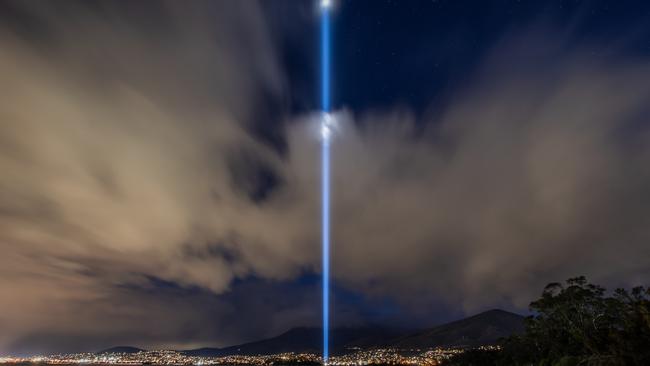
Mike Parr
“Australian artist Mike Parr has been a regular feature of our program, each work he’s presented has been unique and captivating in its own right. ‘Asylum’ at Willow Court will have left an indelible mark on those who attended. I distinctly remember walking through thousands of mirrors left by the attendees and having a moment of deep reflection on our dark past and the suffering some people in Tasmania have been through.”
“This project was followed by ‘Underneath The Bitumen: The Artist’, when Mike was buried under Macquarie Street for 72 hours. And while this project was largely out of sight, it too brought to the surface a discussion about the traumatic past, this time the long lasting issues caused by colonisation. I’m absolutely certain that this will never happen again.”
Lord Mayor
“There was a lot of public backlash against former Lord Mayor Ron Christie when he threatened to ‘put the brakes on Dark Mofo’ and pull the funding in 2018. We’ve always had a strong and supportive relationship with the Council officers who work alongside our team in order to ensure the festival can be operated safely in public spaces. Our friendship with the elected officials however has been a little more hit and miss.”
Rebekah Del Rio
“Most of our loyal audience know that we’ve been referencing David Lynch’s ‘Twin Peaks’ for many years. It was very special to have Lynch collaborator Rebekah here to sing ‘No Stars’ and ‘Llorando’ in our aptly themed Bang Bang Bar. It was a personal dream come true, and a moment I will never forget.”
2020
“The decision to cancel the 2020 event was one of the hardest moments we’ve experienced in the history of the festival. The entire program was locked in and we were only a few weeks away from launch. We will never forget the anxiety around what we were all facing at that time, and the future of the festival seemed rather insignificant in the scheme of things.”
Union Flag
“Without a doubt the controversy around the inclusion of Santiago Sierra’s ‘Union Flag’ in the 2021 program still lingers today, and had an enormous impact on Dark Mofo. It was an incredibly difficult period and almost saw the festival cancelled. The vitriol and personal attacks were unprecedented, and I now understand first-hand the consequences of presenting work that is misaligned with current societal norms. This experience left me contemplating the limits of freedom of expression, and whether the festival should continue to present art exploring difficult ideas. I’m still grappling with what the answer to this question is.”
Ogoh-ogoh
“The success of the Ogoh-ogoh burning has taken us all by surprise, and is always a well attended festival highlight. What a remarkable experience to walk in a procession of around 10,000 to ceremonially burn the fears of a community. It’s a reminder of the importance of communal ritual, especially in today’s society with its focus on individualism.”
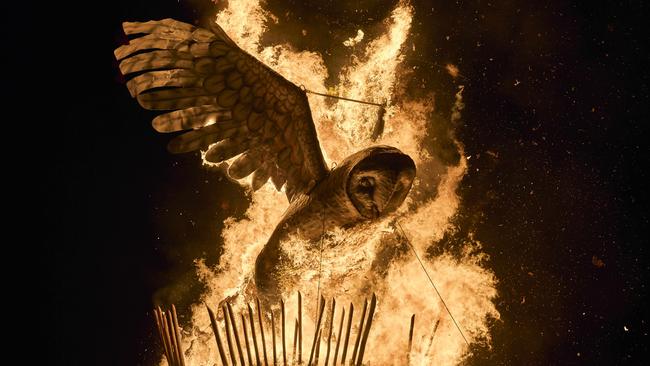
Dark Park
“It still amazes me just how much the kids enjoy being out at night, wandering around in the dark with their family. Dark Park has been the best example of this over the years, with an evolving display of large scale light art, sound, lasers and theatrical performances. It also demonstrates the importance of having large flat spaces big enough for thousands of people to gather.”
Staff and Artists
“The Dark Mofo festival is incredibly difficult to curate, produce, and operate. I have many, many highlights from over the years, but the thing I am most humbled by is how the thousands of staff and artists have turned up with enthusiasm, embraced the cold, the wild weather, the queues and all the challenges to put on an incredible event each year. I have heard many compliments from the public about how great our staff have been, and their contribution to making the festival what it is today can’t be underestimated.”
Audience
“We’re so grateful to all the people who buy tickets, and turn up, rain, hail or shine. They have rarely complained, despite the many times we’ve missed the mark. At the end of the day, the purpose of every festival is for people to gather and celebrate, so there isn’t much point without an audience. We want to thank everyone who brings their energy and good vibes that ultimately make it all worthwhile.”

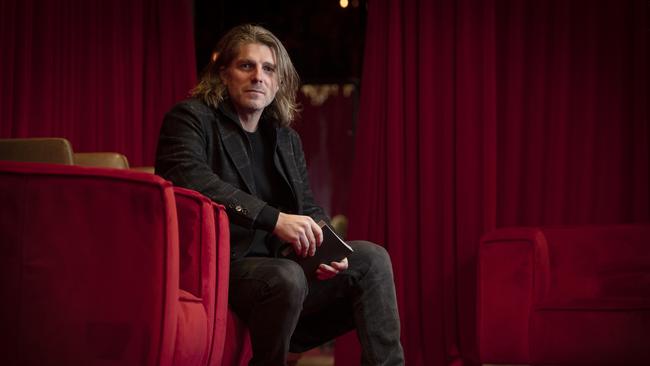
Add your comment to this story
To join the conversation, please log in. Don't have an account? Register
Join the conversation, you are commenting as Logout
Lift federal funding to solve budget woes: poll
Voters back greater federal funding as the best way out of Tasmania’s debt spiral, according to new polling by the Australia Institute. ANALYSIS >>
Captive-breeding giving insights into Tassie’s endangered species
The release of a captive-bred marsupial species has helped to produce some quoll-ity data that will improve the outcomes for next generations. What researchers found.